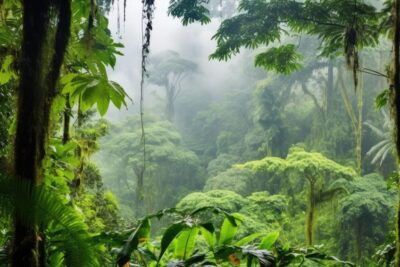
Rather than wait for the wind to bring moisture from the ocean, it turns out trees in the Amazon are capable of generating their own miniature weather systems as well.
As the trees undergo photosynthesis, they release water vapor from their leaves in a process called transpiration. This water vapor condenses in clouds above the canopy, and eventually falls as rain to replenish the forest floor with moisture. It’s a self-contained water recycling system that allows the Amazon’s trees to make the most of a limited resource.
Researchers at the University of California, Los Angeles confirmed this theory when they detected the presence of deuterium in atmospheric moisture above the rainforest. Deuterium is a heavy isotope of hydrogen that’s found in water vapor produced by photosynthesis, but not in water evaporated from the ocean. Now, the researchers are conducting a follow-up study to find out of the same process occurs in rainforests in the Congo.
This remarkable discovery demonstrates that the trees in the Amazon play an active role in the rainforest’s seasonal weather patterns. This means that deforestation could not only compromise species diversity in the Amazon, but also make the region more prone to drought. Hopefully, with this in mind, environmental officials in South America will take proactive steps to protect the rainforest from further development.

